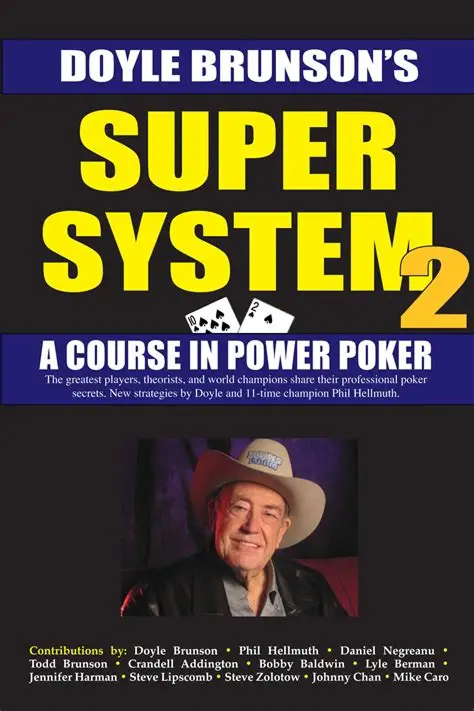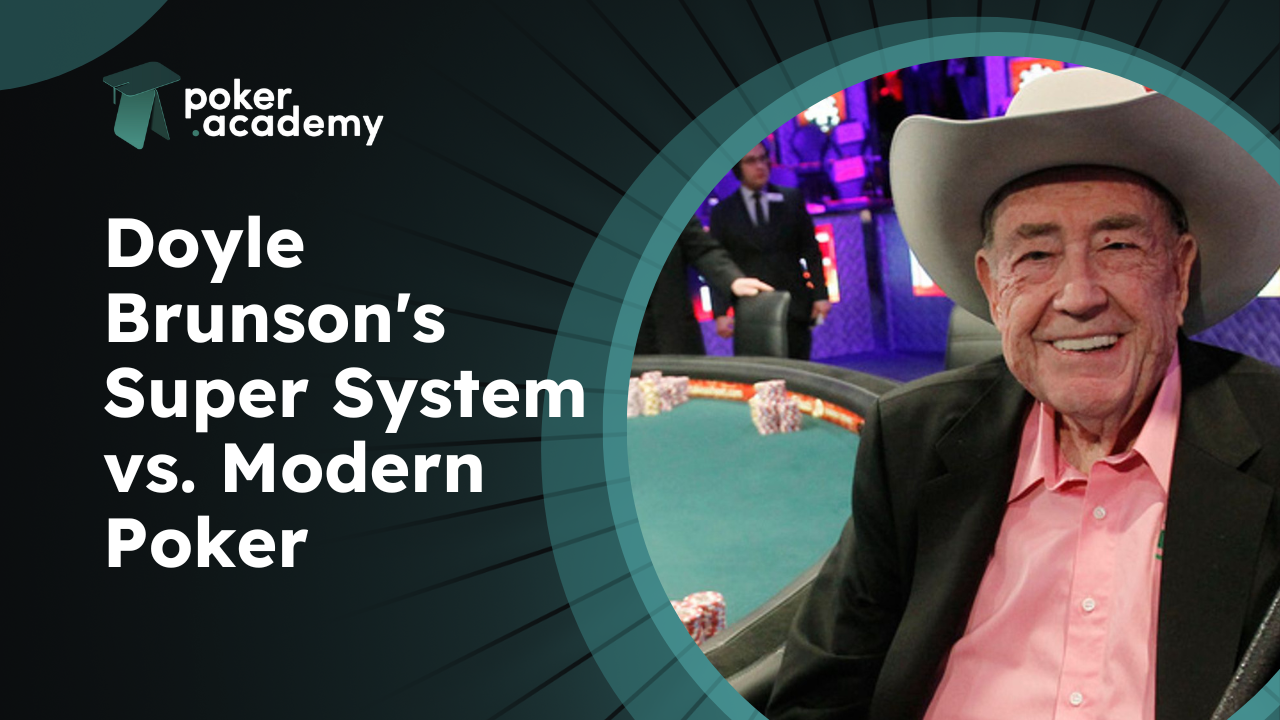In 1979, Doyle Brunson published Super System — the first comprehensive guide to No-Limit Texas Hold’em. It became the poker Bible for a generation. But how well does its advice hold up in 2025, the era of solvers, game theory, and advanced preflop charts?
A Vision Ahead of Its Time… and Some Myths
Brunson claimed, “There’s never going to be a computer that will play world-class poker.” That sounds laughable now — especially after AI like Libratus beat top players. But in fairness, Brunson also touched on a concept that solvers later confirmed: the idea that one hand can be played multiple ways and all of them be correct. In 1979, this was groundbreaking.

Yet not all his advice aged well. For example, Doyle wrote that AK offsuit is better than AK suited because it can make two flushes. We now know that’s simply not true. Today’s solvers have shown that AKs is far more profitable, both in raw equity and playability.
Preflop Was Tight… Too Tight
Brunson’s book only advised 3-betting with Aces and Kings, and made no mention of 3-bet or 4-bet bluffs. Even Queens and Jacks were to be played passively preflop. In contrast, modern GTO strategies often treat AQ+, TT+ as standard value 3-bets, especially at 100BB depth. Bluff combos (like suited connectors or blockers) are also part of a balanced strategy.
Postflop: The 90% C-Bet Rule?
Brunson wrote: “Whenever I raise preflop, I’m going to bet the flop 90% of the time.” This was common wisdom for decades. But solvers have since shown that over-cbetting is often a leak. The right strategy depends on board texture, position, and range advantage. On many flops, especially from early position, GTO suggests checking most of your hands.
Leads, Mini-Bets, and… Rush Magic?
Brunson also advocated for “leading into the raiser with big hands” — which is now situationally correct. Solvers do lead on some boards, but most often recommend checking the entire range when out of position.
The most curious advice? Doyle said that after winning a hand, you should keep playing every pot until you lose one — to “keep the rush going.” While charming, that sounds more like astrology than strategy. In modern poker, discipline and range construction beat superstition.
Conclusion
Doyle Brunson’s Super System was a revolutionary text for its time. Some of his instincts were brilliant — even prophetic. Others feel naive by today’s standards. But that’s what makes comparing eras so fun.
In a game where equilibrium is now studied with AI, it’s fascinating to look back at when poker was still more art than science.
